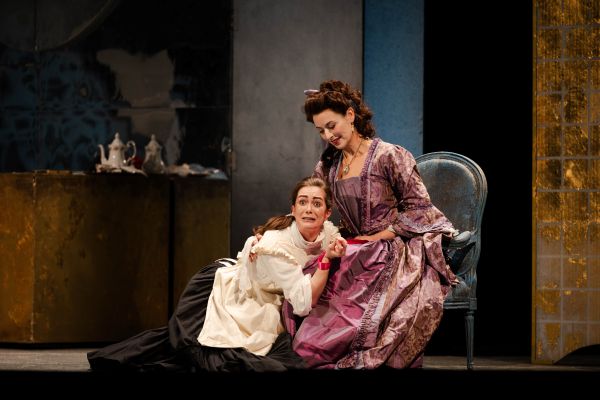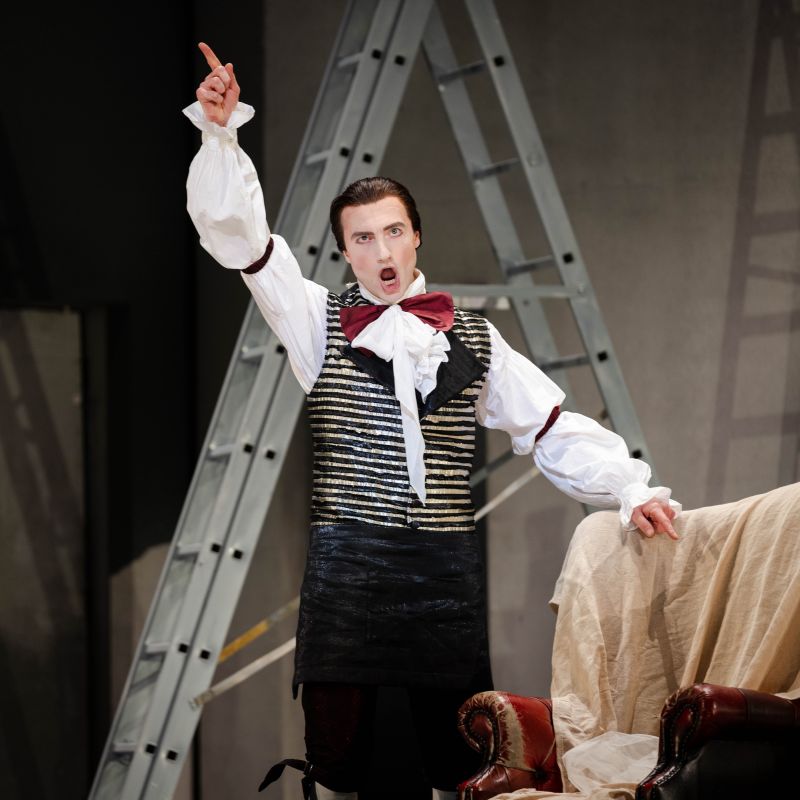By Martin Brisland.
Have you watched the Shawshank Redemption film? Then you will have heard a beautiful Mozart aria from the Marriage of Figaro. It is the scene where Andy Dufresne (Tim Robbins) breaks into the warden’s office and plays it over the loudspeakers to the inmates in the yard. This small act of rebellion demonstrates the power of art and beauty to inspire even in the darkest of moments.
The Marriage of Figaro is based on Pierre Beaumarchais’ political satire a Folle Journée (1784), a sequel to The Barber of Seville. It is a scathing critique of the power of 18th French nobility. They exercised the ‘droit de seigneur’, or the right of the lord to take sexual advantage of his female servants.
Yet the story makes the orphan servant Figaro key to a convoluted and subversive plot that not only examines privilege but is about the ‘battle of the sexes.’
Dating from 1786, this popular comic opera feels totally relevant to many issues in today’s society such as gender politics, infidelity, the role of marriage, the value of a long-lasting relationship over an exciting but shallow one, and so on.
The opera begins with Susanna (Christina Gansch) and Figaro (Michael Mofidian), servants to the Count and Countess of Almaviva, making plans for their wedding. Susanna is afraid that the Count will revive the droit de seigneur to sleep with the bride. Figaro thinks he can outwit the Count of Almaviva (Giorgio Caoduro).
What follows is a farce of mistaken identities, overheard conversations where the plot thickens and new truths are discovered, like Figaro finding he is not an orphan.

At its core are the servants, with the help of the betrayed Countess, plotting against the Count.
Erin Rossington made her Countess character a stand out, especially in the second half of the opera.
Michael Mofidian’s Figaro and Christina Gansch’s Susanna sparked off each other well. Mofidian shines in his Act Four tirade against women, when he believes Susanna to be succumbing to the count’s wiles.
Monika Sawa’s Marcellina and Wyn Pencarreg’s Doctor Bartolo matched each other in outrageousness, Jeffrey Lloyd-Roberts camped up his Don Basilio.
Julian Boyce brought comic touches to the gardener Antonio, whose interventions are key to the comic twists.
The Marriage of Figaro is not, however, just relatable or thought-provoking: first and foremost, it is funny. The many witty jokes elicited genuine laughter from the audience and the whole performance felt consistently lively.
Conductor Kerem Hasan worked excellently with his singers; the faster exchanges felt perfectly timed and the more famous arias were given all the space they needed to breathe.
The Marriage of Figaro is devilishly complicated, and much of its plot its rather contrived, but it manages to convince its audience of a rather unbelievable tale as if it was perfectly sensible and logical. This is no easy feat, but this production managed it in style, making for a thoroughly delightful night at the opera.
#SaveOurWNO placards with Don’t Cut the Chorus slogans were held high at the curtain call, reminding us like the Shawshank Redemption that art and culture are worth fighting for.
Tickets for Welsh National Opera’s Spring Season (Wednesday 30 April – Saturday 3 May 2025) are on sale at mayflower.org.uk or 02380 711811.
- In Common is not for profit. We rely on donations from readers to keep the site running. Could you help to support us for as little as 25p a week? Please help us to carry on offering independent grass roots media. Visit: https://www.patreon.com/incommonsoton

